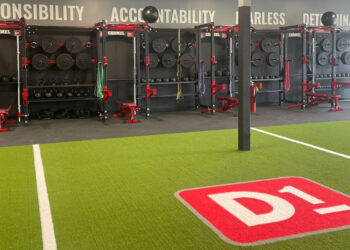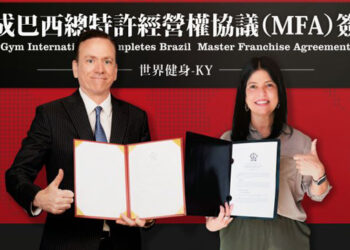America and many countries all over the world are now in desperate need of quality physical education alternatives for children. Shrinking school budgets, an overabundance of fast food chains and an increasing interest in sedentary activities are effecting how kids exercise and play; leading to problems with overweight and obesity.
The greatest challenge facing the fitness industry is to provide children’s programs that deliver results and are still interesting from a child’s point of view. First, we have to look at what does not work. Kids are not motivated by the same things as adults: they’re not trying to lose those last few pounds of “baby weight,” they don’t want to look better to attract a mate, and they’re not working out to prevent heart disease. They play and exercise because it’s fun! Exercise offers children a chance to test their physical and mental abilities, socialize with peers, and learn new skills.
Successful fitness programs for kids need to be built on three basic rules:
1. Fun. When teaching kids about movement and physical education, it always has to be fun.
2. Stimulating and Interesting. The facility and the kid’s area should be stimulating and interesting in order to ensure that children will want to return week after week.
3. Educational. Programs should be educational at their core and taught by professionals who understand child development.
These three basic rules not only apply to preschool- and elementary-age children, but also to middle-schoolers and kids in their “tweens.” (“Tweens” refers to the distinct marketing demographic segment between the ages of children and teenagers). At this age, you can begin to introduce fitness machines; they must be properly sized hydraulic machines that are gentler to growing bodies. And, of course, the programs still need to be thought out and well executed. Education and challenging activities are still key.
There are several children’s circuit programs on the market. Few, however, are packaged with curriculum and activities to help facilitate a successful program. Without planned activities or creative leadership from the instructor, the program will soon become repetitive and boring.
By creating circuits that incorporate hydraulic machines, climbing stations, games, and hand-eye coordination challenges, children will feel the natural high of accomplishment as they transition into a more “grown-up” obstacle course. They will feel that they’re doing physical activities like their parents, yet they’re designed just for them!
When shopping or researching a children’s program, look for equipment packages that offer variety and the ability to interchange pieces. In this way your purchased equipment will cover a wider age-range, as well as provide you with more options for creating stimulating challenges for kids. Flexibility is crucial. Older children tend to advance through skills at a faster rate; as a result, it is also essential that you have something new for them when they come in to your facility, as you may not always want to use a circuit.
Try facilitating teamwork exercises or activities that foster communication and cooperation, as these skills will help boost self esteem (this is extremely important when dealing with heavier children who may already feel isolated by their peers). Likewise, children who have an existing overweight or obesity problem may need to come in to exercise more than once a week, so you may want to consider a program with a curriculum designed for multiple visits per week.
Just like with elementary-age children, “tweens” want a place to call their own; so be sure their exercise area is separated from the adult workout areas. Kids want to belong to their own “club,” so keep it colorful, hip, and full of activity. Pay attention to the latest trends. Hire a professional staff, who loves working with children. The instructor’s job is not only to facilitate activities, but also to help keep the kids motivated…An instructor’s energy and enthusiasm will set the tone for the program, and will directly influence its success. The atmosphere should always be friendly, nurturing, and non-competitive, so that everyone will feel welcome.
With a little bit of creativity, forethought, and the right equipment, you will successfully create a program that works for every stage of a child’s life. An early love of movement and physical activity is important in the development of a child’s body and mind, especially in today’s society where so much of our children’s time is spent sitting down in front of monitors and screens. As adults, we must foster interest in play and exercise throughout a child’s development with flexible, age-appropriate programs.
Schools, parents, government, and the private sector must all work together to effect real change for our children. The fitness industry has a unique opportunity, and responsibility, to impact the next generation of Americans. But if we don’t start solving the problems of childhood inactivity and obesity soon, they may be beyond our reach as adults.
Siegfried Gerstung is the President of Gerstung Inter-Sport. He can be contacted at 800.922.3575, or by email at sg@gerstung.com.








